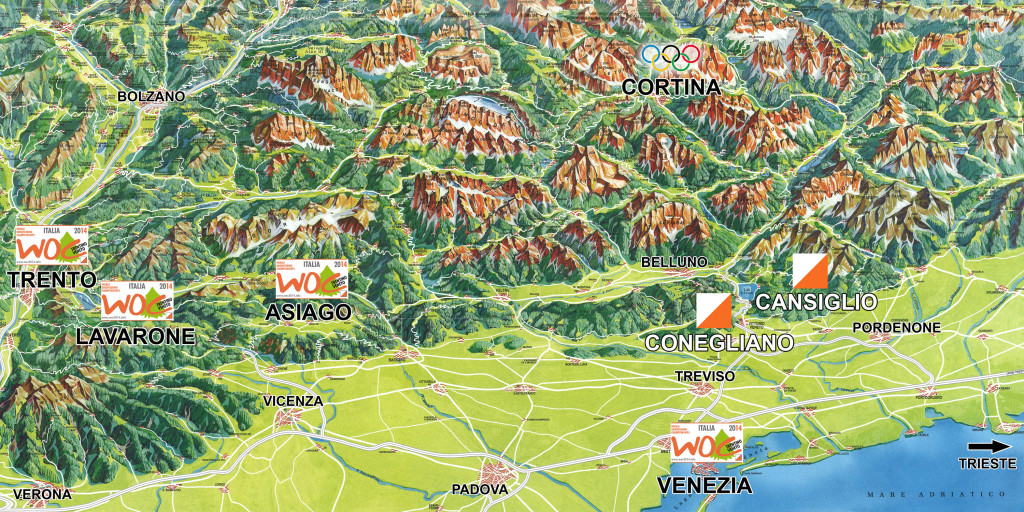The Alpe Adria events will take place one week prior to the World Championships with races in Trento, Lavarone and Venice. The Veneto Region offers a multitude of touristic opportunities to make the most enjoyable summer for its visitors!
Race sites
Forest of Cansiglio
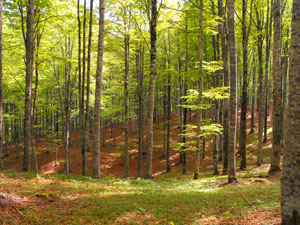 All events will be held in various woods of the Cansiglio Forest which, with its 7,000 hectares area covered mainly with beech and pine trees, is the second largest in Italy. The Forest is situated at the abutting points of the Belluno, Treviso and Pordenone provinces. The Cansiglio plateau is an ample valley in the middle of the Forest at an altitude of 905 meters above sea level. During the month of June the temperature varies from +8°C during the night to +20°C during the day. Scattered thunderstorms are quite frequent in the warmer hours of the afternoon so is advisable to wear mountain clothing an gears.
All events will be held in various woods of the Cansiglio Forest which, with its 7,000 hectares area covered mainly with beech and pine trees, is the second largest in Italy. The Forest is situated at the abutting points of the Belluno, Treviso and Pordenone provinces. The Cansiglio plateau is an ample valley in the middle of the Forest at an altitude of 905 meters above sea level. During the month of June the temperature varies from +8°C during the night to +20°C during the day. Scattered thunderstorms are quite frequent in the warmer hours of the afternoon so is advisable to wear mountain clothing an gears.
Visitors will find themselves immerse in a lush and rich forest area with many of its flora species labeled on the government’s protected list: a real jewel for the indiscriminate naturalist. Of particular interest is to observe the inversion of the trees vegetation with the beeches striving uphill relegating conifers at the bottom: the exact contrary of what’s usually the case. Another point of interest within few feet of the race course is the botanic garden. The Cansiglio fauna is also varied and plentiful. The animals can be seen in different zones comprised within the Forest contributing in such way to maintain a natural equilibrium. It’s not a rarity then to observe woodpeckers, hawks, foxes, weesels, deers etc.
For more info: see our page about Forest of Cansiglio or download the Alpago guide: Alpago (ENG)
Conegliano
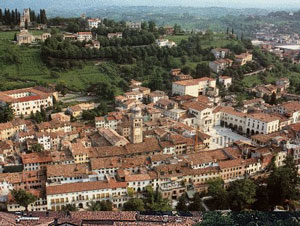 The 28th of June sprint race, valid for the world ranking event, will take place in this town 25 kilometers away from the Cansiglio. This town also known as “The pearl of the Veneto” is characterized by its historic center which runs from east to west along via XX Settembre. On this portico’s filled street one can see numerous old palaces: the Piutti house, the Sarcinelli palace, the Montalban palace, the Longega house, among them. At Cima Square the stately theater of the Academy is another architectural beauty. Nearby the Cathedral houses paintings of Cima da Conegliano famous XVI th century painter.The old castle is within wallking distance from the center, its Museum offer a rich collection of paintings, frescoes, antique furniture and archeological items from the paleolithic and Roman eras.
The 28th of June sprint race, valid for the world ranking event, will take place in this town 25 kilometers away from the Cansiglio. This town also known as “The pearl of the Veneto” is characterized by its historic center which runs from east to west along via XX Settembre. On this portico’s filled street one can see numerous old palaces: the Piutti house, the Sarcinelli palace, the Montalban palace, the Longega house, among them. At Cima Square the stately theater of the Academy is another architectural beauty. Nearby the Cathedral houses paintings of Cima da Conegliano famous XVI th century painter.The old castle is within wallking distance from the center, its Museum offer a rich collection of paintings, frescoes, antique furniture and archeological items from the paleolithic and Roman eras.
Just outside the inhabited area of town the Conegliano/Valdobbiadene hills are traversed with vineyards renown worldwide for the production of the famous Prosecco sparkling wine.
For more info: Conegliano – Treviso province tourism web site
Worth seeing
Venice
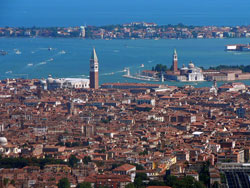 Venice is the elegant , precious, unique and romantic gem of the iItalian tourism panorama. Churches, old palaces, bridges, monuments, and squares tell in details the glorious past of this beautiful city. San Marco Square, dubbed also as “The most elegant living room of Europe”, is surrounded by by works of great artistic value such as: the imposing basilica with its richly decorated interior, the Mori’s tower: masterpiece of engineering that has rang the passing of time through the centuries and the Palazzo Ducale: symbol of the gloried days of the Serenissima. Other points of interest are the numerous museums throughout the city : Correr, Guggenheim, and the old port, now adapted as a Center for the Contemporary Arts just to name a few. Every November for the last thirty years, orienteering athletes from all over the world convene here for their annual meeting. This year following the Alpe Adria events, the city will host the sprint World Championship’s races.
Venice is the elegant , precious, unique and romantic gem of the iItalian tourism panorama. Churches, old palaces, bridges, monuments, and squares tell in details the glorious past of this beautiful city. San Marco Square, dubbed also as “The most elegant living room of Europe”, is surrounded by by works of great artistic value such as: the imposing basilica with its richly decorated interior, the Mori’s tower: masterpiece of engineering that has rang the passing of time through the centuries and the Palazzo Ducale: symbol of the gloried days of the Serenissima. Other points of interest are the numerous museums throughout the city : Correr, Guggenheim, and the old port, now adapted as a Center for the Contemporary Arts just to name a few. Every November for the last thirty years, orienteering athletes from all over the world convene here for their annual meeting. This year following the Alpe Adria events, the city will host the sprint World Championship’s races.
For more info: Venice province tourism web site
Cortina
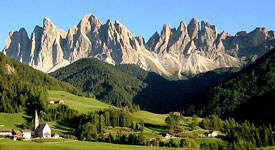 Cortina also known as “the Queen of the Dolomites”, (a short ride away from the Cansiglio), offer its visitors unequal vistas. Its mountains and valleys for that fact have been named world heritage site by Unesco. There are numerous facilities for outdoor activities such as: mountain biking, trekking, free climbing, 400 kilometers of marked hiking trails, golf, ski, bicycle routs running through the “Natural Park of the Dolomites” Cortina/Dobbiacco with site of the majestic Tre Cime di Lavaredo, the emerald/blue Misurina Lake and the mountain passes of Falzarego, Tre Croci, and Giau. The 1956 Winter Olympics were held in Cortina.
Cortina also known as “the Queen of the Dolomites”, (a short ride away from the Cansiglio), offer its visitors unequal vistas. Its mountains and valleys for that fact have been named world heritage site by Unesco. There are numerous facilities for outdoor activities such as: mountain biking, trekking, free climbing, 400 kilometers of marked hiking trails, golf, ski, bicycle routs running through the “Natural Park of the Dolomites” Cortina/Dobbiacco with site of the majestic Tre Cime di Lavaredo, the emerald/blue Misurina Lake and the mountain passes of Falzarego, Tre Croci, and Giau. The 1956 Winter Olympics were held in Cortina.
For more info: Cortina tourism web site
The Asiago Plateau
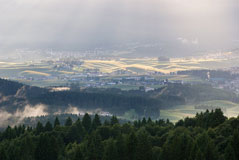 The Asiago plateau, in the province of Vicenza, is a world unto itself, which in the summer shines with the emerald green of its meadows and woods and in the winter acquires a flair of magic for the whiteness of the snow that covers it. The plateau of the 7 commons as it is also known, is formed by a central basin with an average altitude of around 1000 meters, and is bordered to the north by a second summit plateau enclosed by a series of peaks that rise above 2300 meters high (the highest elevation is “Cima Dodici” 2341 meters), while to the south the basin is enclosed by a series of hills that slope towards the Po Valley. To reach Asiago from the Valley below a tortuous hair-pinned road must be dealt with, the top reveals wide horizons, and sweeping grounds, small towns with high bell towers and a crown of peaks. The area was the scene of fierce fighting during the World War One, and are now a destination for excursions between trenches, forts and trenches tracking past history. This area will be the centerpiece of the World Championship races in July 2014.
The Asiago plateau, in the province of Vicenza, is a world unto itself, which in the summer shines with the emerald green of its meadows and woods and in the winter acquires a flair of magic for the whiteness of the snow that covers it. The plateau of the 7 commons as it is also known, is formed by a central basin with an average altitude of around 1000 meters, and is bordered to the north by a second summit plateau enclosed by a series of peaks that rise above 2300 meters high (the highest elevation is “Cima Dodici” 2341 meters), while to the south the basin is enclosed by a series of hills that slope towards the Po Valley. To reach Asiago from the Valley below a tortuous hair-pinned road must be dealt with, the top reveals wide horizons, and sweeping grounds, small towns with high bell towers and a crown of peaks. The area was the scene of fierce fighting during the World War One, and are now a destination for excursions between trenches, forts and trenches tracking past history. This area will be the centerpiece of the World Championship races in July 2014.
For more info: Asiago tourism web site
A bit of history
The Cansiglio property of the Venetian Republic
 This lush forest was confiscated by the Republic of Venice in 1547, following the acquisition of the Belluno’s territories. La Serenissima wisely ran this heritage, considered most valuable as a source of timber to be used for the construction of their boats. Even today, the state-owned forest is managed according to a reforestation plan, while the meadows are used for grazing. On the Plain of Cansiglio survives a strain of cimbra language, an ancient lineage coming from Scandinavia at the time of the barbarian invasions. Similar settlements also exist on the Asiago Plateau. They reached the area for the first time in 1707, thriving thanks to their skill as “Scatoleri” i.e: builders of beech’s boxes.
This lush forest was confiscated by the Republic of Venice in 1547, following the acquisition of the Belluno’s territories. La Serenissima wisely ran this heritage, considered most valuable as a source of timber to be used for the construction of their boats. Even today, the state-owned forest is managed according to a reforestation plan, while the meadows are used for grazing. On the Plain of Cansiglio survives a strain of cimbra language, an ancient lineage coming from Scandinavia at the time of the barbarian invasions. Similar settlements also exist on the Asiago Plateau. They reached the area for the first time in 1707, thriving thanks to their skill as “Scatoleri” i.e: builders of beech’s boxes.
The Great War
All these territories were theaters of heroic battles thanks to which Italy was able to stop the advance of the Austro-Hungarian troops during World War One (1915-18). In the Asiago Plateau, Monte Grappa and the Piave River Basin thousands of men died defending the country: their remains are kept in Military Shrines throughout the area. In Vittorio Veneto, aka “City of Victory”, a shout away from Cansiglio, one can find the “Museum of the Battle”; further, Cortina and Asiago house the two largest open-air museums of the Great War. Tourists can still see walkways, railways and trenches of that time.
What to do
Sports
Throughout the Cansiglio Forest there are numerous trails for mountain biking, hiking and horseback riding. In the immediate vicinity of the of competitions’ site lies a championship 18 holes golf course . In Lake Santa Croce, 15 minutes from the Cansiglio, one can practice kite surfing and on Mount Dorada, in the immediate vicinity, you can hover in the air practicing paragliding.
Food and Wine Trails
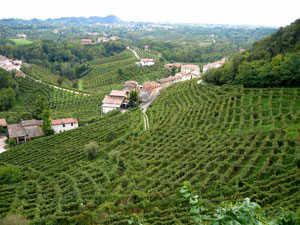 The star of the Treviso food scene is the Prosecco wine: a most recognizable label all over the world. The road, dedicated to it, winds from Conegliano to Valdobbiadene, through hills teeming with abbeys, churches, and castles and embroidered by vineyards. The road start from Conegliano, where we find the Oenology Cerletti School, (considered the best in Italy), which for over a century molds some of the best winemakers in the country. We then come to San Pietro di Feletto to continue toward Solighetto, Soligo and Valdobbiadene. Typical of the Cansiglio are the various dairy products and “Pastin” (hamburger like ground pork). The red radicchio from Treviso and Castelfranco, with its slightly bitter taste is featured in many pasta dishes and pleasantly accompanies meat main courses; polenta, yellow and white, it is often paired with dishes of venison and cheeses (typical are the Cansiglio and Asiago cheeses: all DOCG products). Vicenza-style cod, wild mushrooms, salami and soppressata are also menu’s favorites. Typical of the Asiago Plateau are also the fruit jams and various honeys. Speaking of earth products, one can not forget the famous grappa (distilled wine and grape mix), the Torchiato di Fregona wine and numerous aromatic herbal cordials.
The star of the Treviso food scene is the Prosecco wine: a most recognizable label all over the world. The road, dedicated to it, winds from Conegliano to Valdobbiadene, through hills teeming with abbeys, churches, and castles and embroidered by vineyards. The road start from Conegliano, where we find the Oenology Cerletti School, (considered the best in Italy), which for over a century molds some of the best winemakers in the country. We then come to San Pietro di Feletto to continue toward Solighetto, Soligo and Valdobbiadene. Typical of the Cansiglio are the various dairy products and “Pastin” (hamburger like ground pork). The red radicchio from Treviso and Castelfranco, with its slightly bitter taste is featured in many pasta dishes and pleasantly accompanies meat main courses; polenta, yellow and white, it is often paired with dishes of venison and cheeses (typical are the Cansiglio and Asiago cheeses: all DOCG products). Vicenza-style cod, wild mushrooms, salami and soppressata are also menu’s favorites. Typical of the Asiago Plateau are also the fruit jams and various honeys. Speaking of earth products, one can not forget the famous grappa (distilled wine and grape mix), the Torchiato di Fregona wine and numerous aromatic herbal cordials.
